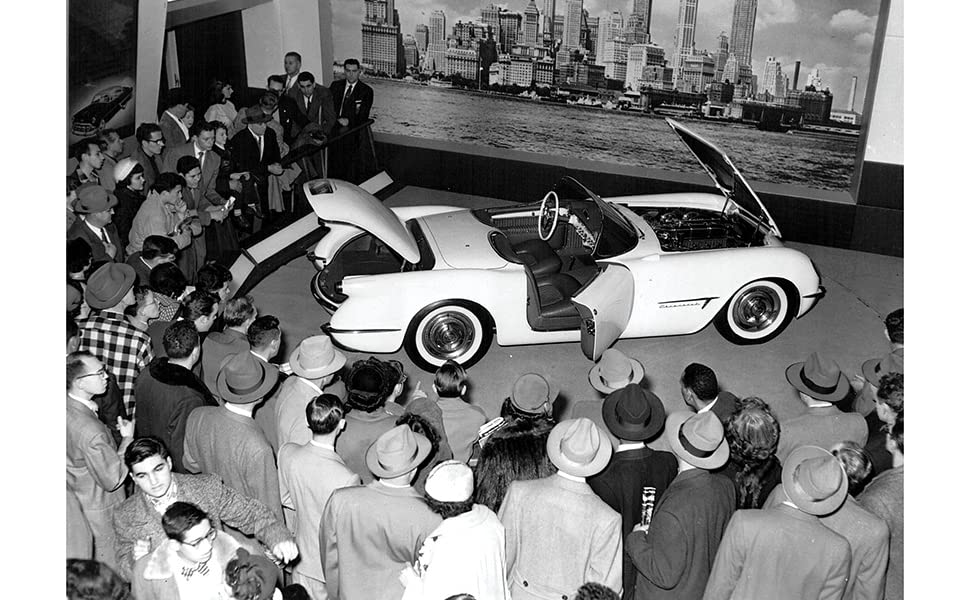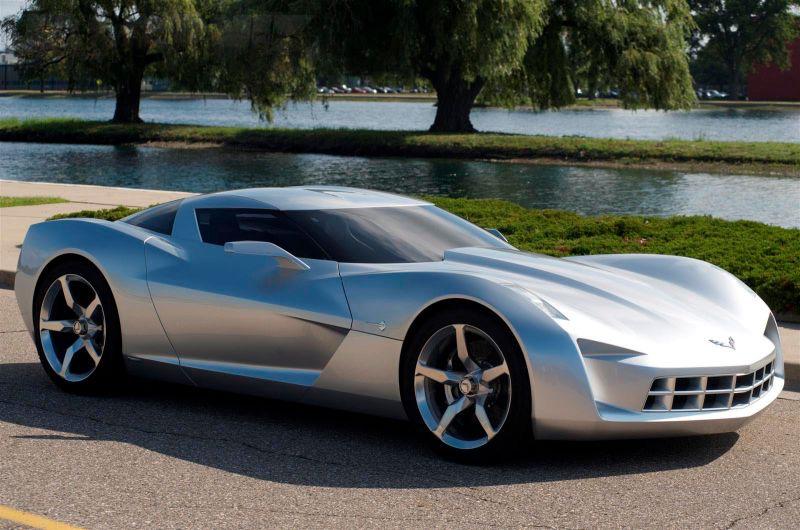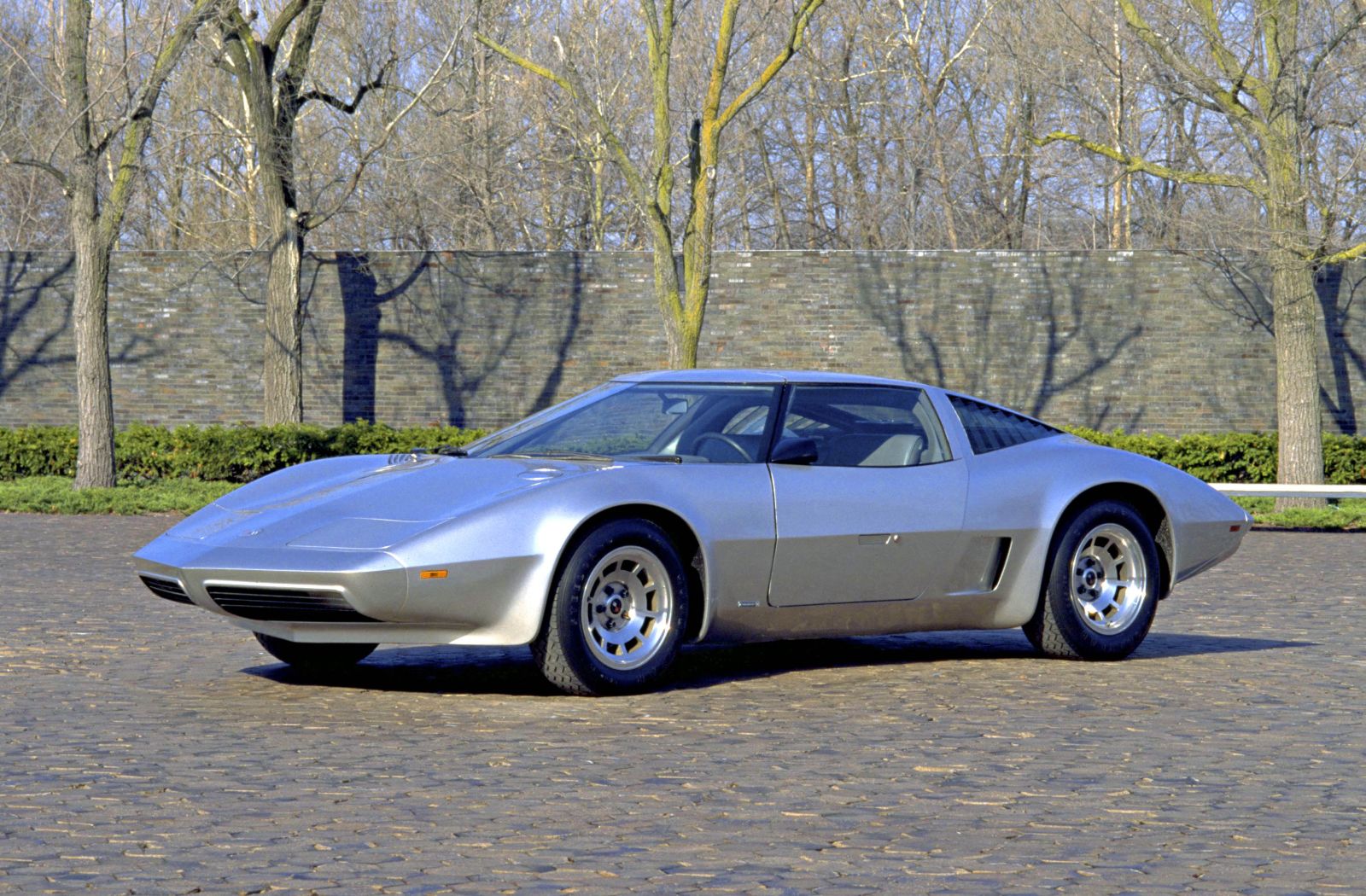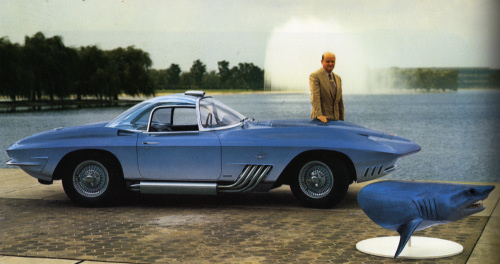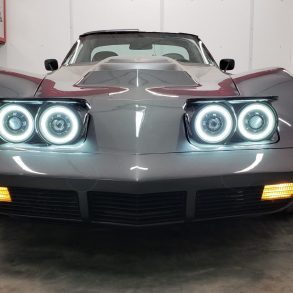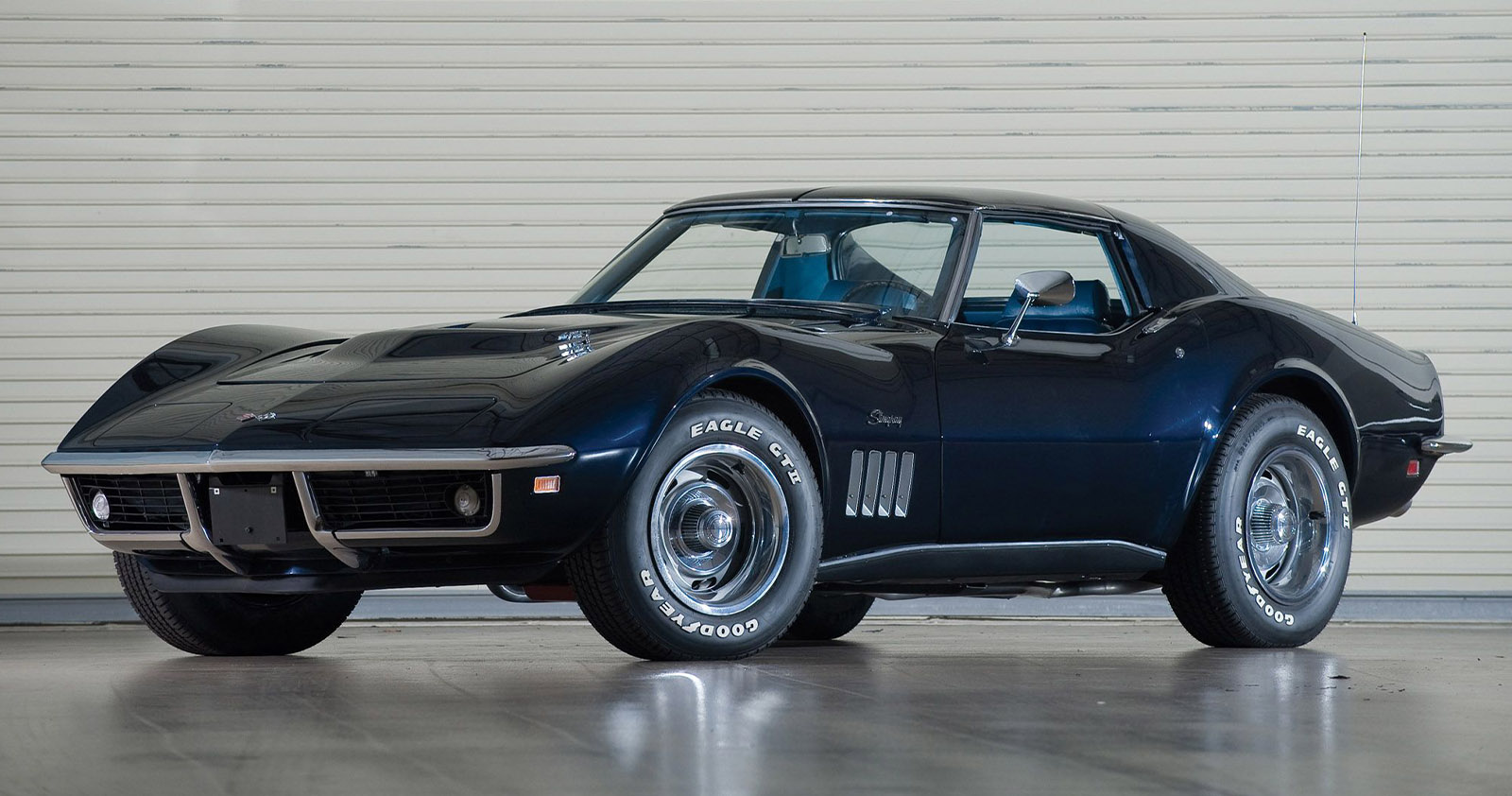Welcome to the second episode of The Best Of CorvSport–if you missed the first, check out The Top 10 Guides And Resources For The Corvette Enthusiast. This is by far my favorite series out of the 654 articles I’ve published since joining the CorvSport team in early 2023. I don’t say this enough, but thanks to the higher-ups at CorvSport for giving this retired used-car dealer an opportunity to marry my passion for the Corvette with my creative side. This series, along with the majority of CorvSport’s digital content, is FREE and not behind a paywall. When any pop-ups appear, please click to dismiss them and continue enjoying the article.
Why is this series my favorite? Well, mainly because I get to hunt our vast database of over 5,300 features and learn new things about the iconic Corvette. And in the process, I’m reminded of how diverse and deep our 15-year-old digital database is. If you want to get a glimpse into what we do every month, you can view our top 25 new publications at our digital magazine, CORVETTE OBSESSED.
Now, onto these Corvette concept cars and prototypes! Did you know our founder, Scott Kolecki, wrote a book dedicated solely to the concept cars that fueled and propelled the Corvette to America’s Sports Car? For some bonus content, below our Top 7 Concept Cars & Prototypes, I’ve included details on his enlightening book directly from Scott. Also, we have a free preview of a newly published mid-engine development and concept feature from Scott Teeters, which is part of CorvSport’s member-only content. Lastly, I’ve formatted this series for an easy scroll, with opportunities to read further if the concept car and prototype interests you.
Enjoy an ad-free experience, get exclusive content, and support CorvSport for only $2.92/month!
The Top 7 Corvette Concept Cars & Prototypes
7) 1986 Corvette Indy Concept
Author: CorvSport
The 1986 Corvette Indy Prototype was developed beyond clay modelling to the point of a fully-functioning, drivable car, though it was clearly understood that this car would never evolve beyond the prototype stage. Like the clay mock-up before it, development of the mid-engine Corvette Indy prototype began in 1985, pulling most of its design cues from its predecessor.
The Ilmor Company, an independent British engine manufacturer which had been established in 1983, began development of a new 2.65-liter IndyCar engine that featured twin-intercooled turbos. Known as the Ilmor–Chevrolet 265, the engine made its debut at the 1986 Indianapolis 500 with Team Penske driver Al Unser. Chevrolet engineers adapted a version of this engine for use in the Corvette Indy Concept, which was so-named because it featured an engine that had been designed for use by Indy race cars.
General Motors Vice President of Design Chuck Jordan took an immediate interest in the mid-engine Corvette Indy. He believed that the car would be an ideal showcase for the emerging electronics and technology markets that were beginning to make inroads into the production car market. He directed the engineering team (which included then-staff-designer Tom Peters) to integrate these new technologies into the next-generation Corvette. He began the process by using Peter’s rendering of the next-generation Corvette concept to determine what (and how much) technology could be packaged into the actual car. Some of these technologies included satellite navigation (which was significant in that it was introduced before global positioning satellites were approved for the civilian market), a CRT (Cathode-Ray Tube) instrument display and an electronic throttle control system… Continue Reading or Save For Later
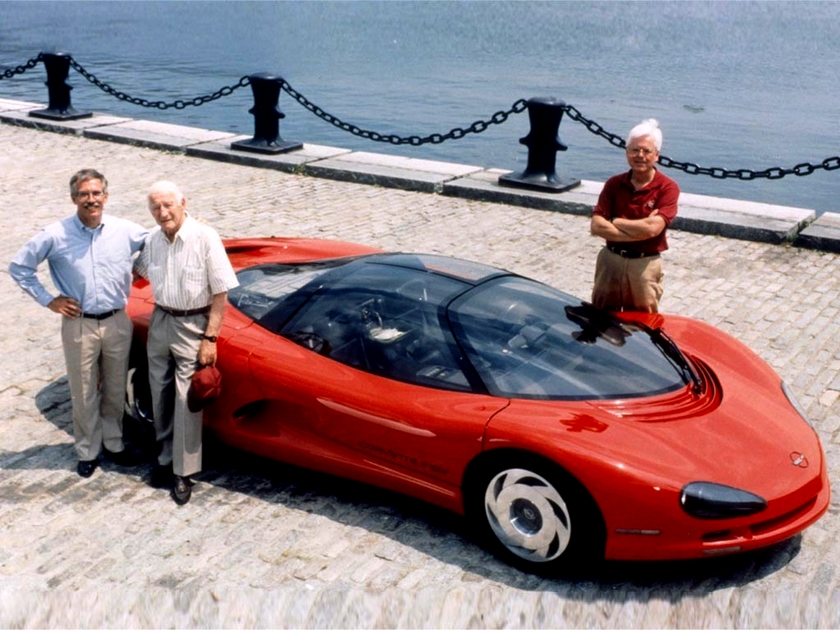
6) 1990 CERV III
CorvSport Author: Scott Kolecki
While it was understood that the Corvette Indy Concept would never be fully realized as a production vehicle, it paved the way for the creation of the twin-turbo CERV III. The CERV III (Chevrolet Engineering Research Vehicle No. 3) was introduced in January, 1990 at the International Auto Show in Detroit, Michigan. Like the latter iteration of the Corvette Indy Concept car, the CERV III was fitted with a 5.7 Liter, 32-valve, dual-overhead cam LT5 engine that featured twin turbochargers. So equipped, the car was rated at 650 horsepower (485 kW) and 655 lb/ft (888Nm) of torque with a documented top-speed of 225 mph (362 km/h).
Despite the size of the new powerplant, the CERV III’s engine was mounted transversely (as it had been in the Corvette Indy Concepts.) The engine powered all four of the car’s wheels through a six-speed automatic transaxle (which was, in reality, a three-speed Hydramatic transmission driving a custom two-speed gearbox.)
The CERV III was developed to the verge of becoming a production vehicle despite being far more sophisticated (and therefore far more expensive to build) than any Corvette that came before it. It was hailed as being the “most advanced Corvette study to date” full of the most sophisticated electronics available at that time. For example, the introduction of electronic computer-controlled systems enabled the return of fuel-injection (which provided higher levels of performance akin to what the old second- and third-generation Corvettes once offered) all the while maintaining better than expected fuel efficiency and low emissions ratings, even when running on commercial grade gasoline… Continue Reading or Save For Later

5) 2009 Corvette Stingray Concept
Author: CorvSport
SIDESWIPE takes the form of a sleek, vision concept dreamed up by the Corvette designers at GM. The design is influenced by the original Stingray race car, introduced in 1959, but also draws on Corvette heritage cues from other generations. It brings them together in a futuristic shape that seems to be equal parts racecar and space ship.
“SIDESWIPE represents an exercise in exploration for the Corvette,” said Ed Welburn, vice president of GM Global Design. “By giving my creative team the freedom to design no-holds-barred vision concepts, it helps them push boundaries and look at projects from different perspectives.”… Continue or Save For Later
4) 1973 Corvette Four Rotor XP-882 Aerovette Concept
Author: CorvSport
The same XP-882 that had been shown in New York in 1970 served as the basis for this Wankel motor prototype. Under Bill Mitchell, Henry Haga was responsible for it’s design. Called the “Four-Rotor Car”, it was arguably more stunning than the Two-Rotor XP-897GT, that appeared a bit later in 1973. Built on the first XP-882 chassis under the aegis of company design chief Bill Mitchell, it carried a pair of GM’s experimental two-rotor engines bolted together into a 420 horsepower “super Wankel.” A Corvette-like face and obvious high performance potential were taken as strong suggestions that GM was brewing a radical new Corvette for the late Seventies or early Eighties.
GM design chief Bill Mitchell kept its original lines intact, however — not that there was reason to fiddle. Charles Jordan oversaw the design, which included radical bifold gullwing doors, and deformable plastic body-colored nose and tail sections which are common today, but revolutionary in the mid-1970’s. The sterling silver paint, with silver leather interior and forged alloy turbine wheels later seen on the 1978 Corvette Indy Pace Car, gave the Corvette a space craft like appearance unmatched by any other advanced sports car. The interior was more fully engineered than the show-car norm, another indication this model was indeed a serious production prospect.
The car debuted at the Paris Auto Salon in 1973, during a period where American performance was being stifled by the twin evils of restrictive insurance practices and the first Arab oil embargo. At the time, performance enthusiasts didn’t have much to be enthusiastic about as engine compression ratios were coming down and quarter-mile times were going up.
Bill Mitchell, the ardent Corvette styling department magnate, gave the car a new life by removing the Wankel engine and reinstalling a small-block Chevrolet V8 and christening it the AeroVette. A stunningly dramatic-looking car, it was promoted as the new 4th-generation Corvette for 1980, but never saw series production. Continue or Save For Later
3) 1961 XP-755 Mako Shark I Concept
CorvSport Author: Scott Kolecki
The Mako Shark Corvette was conceived and designed by Larry Shinoda under the direction of Bill Mitchell to provide GM’s VP of Design with a one-off concept/prototype intended to pre-showcase the as-yet-unreleased second-generation Corvette Sting Ray. Mitchell greenlit the XP-755 project in 1961 because he did not want to wait another two years to experience the new Sting Ray for himself. Instead, he had the clout within GM to create a concept car that showcased much of the technology that would be introduced with the second-generation Corvette.
Larry Shinoda, one of Mitchell’s favorite designers, designed the Shark from his earlier XP-720 model and the original XP-87 race car. The Mako Shark I incorporated a number of elements from the XP-720 concept, which had been previously designed by Shinoda as a styling study for the second-generation Sting Ray. New to the Mako Shark was a “double-bubble” canopy that had been developed for another Corvette concept – the XP-700.
Rumor has it that Mitchell found inspiration for his XP-755 Corvette while on a deep-sea fishing trip in the Bahamas. Mitchell had caught a Mako Shark on that trip and was instantly inspired by the shark’s agility in the water as well as its sleek profile. He saw the shark as the perfect motif for the car and, upon his return to Detroit, instructed Shinoda to use the shark as a source of design inspiration when designing the car.
Working in conjunction with Shinoda, the pair set about designing the car and by April 1961, they’d developed a full-scale clay model of the Mako Shark that checked all of Bill Mitchell’s design requirements. Construction of a fiberglass body was started shortly thereafter… Continue Reading or Save For Later
2) 1968 Astro II (XP-880) Concept
CorvSport Author: Scott Kolecki
By the late ’60s, lead Corvette engineer, Arkus Duntov, had become consumed with the idea of transforming the Corvette into a mid-engine race car, much like those found abroad. However, top Chevrolet brass lived and died by the mantra of “do not fix what is not broken”, and such a project was never green-lighted during this era.
This did not stop Duntov from exercising his mid-engine ideology when, and wherever he could. The Astro II was one of the most significant case studies of Duntov’s outright refusal to let his mid-engine dreams die, and as such, ultimately entered the history books as a precursor to the eventual mid-engine, C8 Corvettes of today.
The Astro II was designed in a way that was more representative of the Corvette’s typical styling cues, than that of The Astro I. Unlike the Astro I, the Astro II featured actual driver and passenger doors, as well as a rear glass. The car was also taller in stature than the Astro I, as it measured 44” at its roofline. The Astro II’s rear facade proved to be a point of influence, as production Corvettes began adopting a nearly identical rear design for the 1974 model year.
At the heart of the Astro II was an L36 437 cubic-inch V8, which was paired to a transaxle, as opposed to a standard transmission. The L36 was turned 180 degrees so that its starter and ring gear resided under the Astro II’s seatbacks. As monumental as this feat of engineering was, the original two-speed Pontiac Tempest transaxle used during the design process proved to be incapable of handling the 400 horsepower L36’s output.
The Astro II was also notable for its use of production parts, which could be found behind virtually every parts counter. Camaro Lower front wishbones, knuckles, spindles, and brake rotors were utilized in the car’s design, as were Corvette transverse leaf springs and brake calipers. Additionally, Oldsmobile Toronado universal joints were used at the half shafts inner ends… Continue Reading or Save For Later
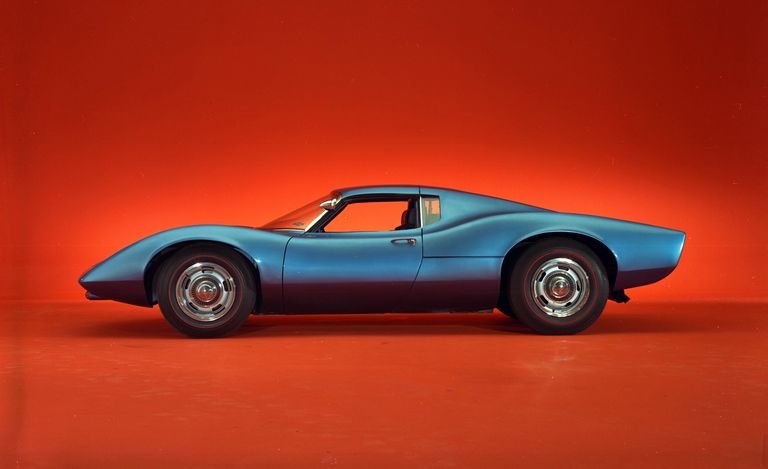
1) The 1953 EX52 / EX122
As a part of Scott Kolecki’s The Ten Greatest Corvette Concepts Of All Time
You can’t talk Corvettes without talking about the car that started it all. Based on Harley Earl’s Project Opel plaster model, the EX52 / 122 was the original concept car that inspired the nation and left countless consumers wanting a Corvette to call their own. This Corvette concept was introduced at GM’s Motorama in January 1953. It was so well received that GM moved the car from prototype to production in just six months’ time! Continue Reading The Ten Greatest Corvette Concepts Of All Time or Save For Later
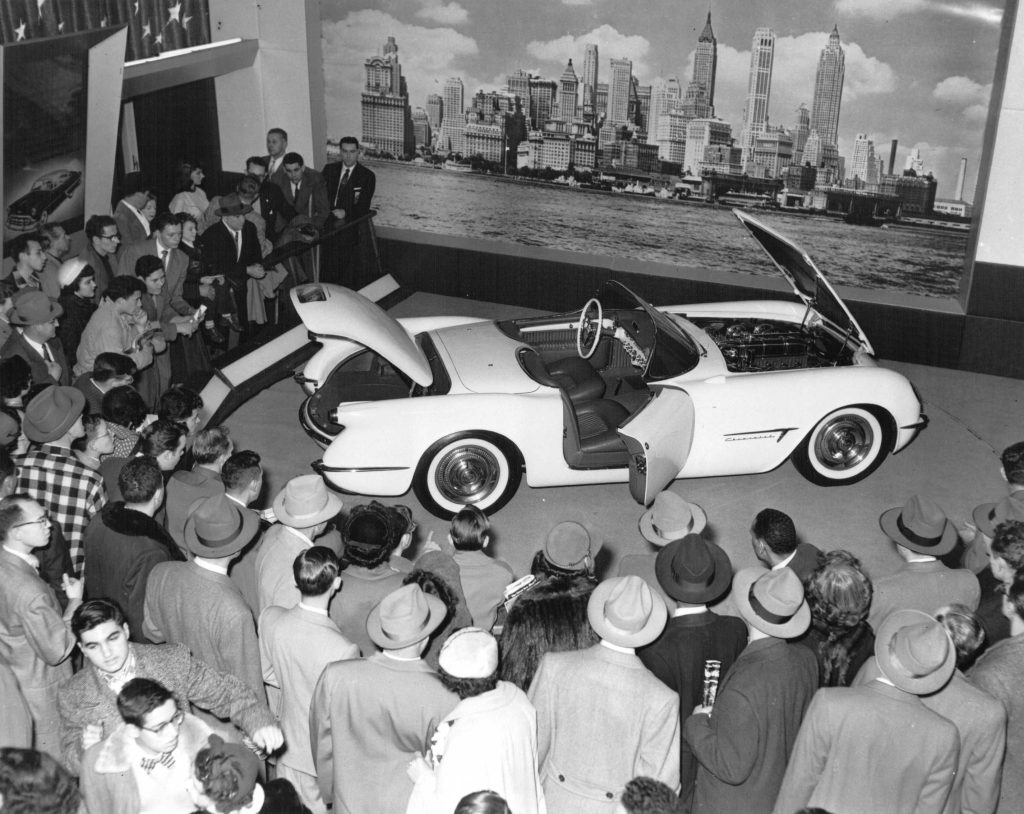
CorvSport Bonus Content
1) Introducing “Corvette Concepts Cars: Developing America’s Favorite Sports Car”
An expansive look of the history of America’s sports car, written by CorvSport founder, Scott Kolecki
CorvSport Author: Scott Kolecki
In 2020, I was approached by CarTech Books to write a book on the history of the Corvette thru the lens of the men and women who designed each generation of this amazing sports car. The book, which took nearly a year to write and another year to assemble, was published in May 2022 and is now available everywhere books are sold. While it is arguably a bit self-serving, I wanted to take a minute to promote the book here on Corvsport.com for two reasons: 1.) The holiday season is quickly approaching, and 2.) I wanted to make myself available to anyone who might want their copy of the book signed in advance of the holidays.
Okay, a bit of history first. I launched Corvsport.com in 2010 and have been a contributing author to the site ever since. In 2016, I sold the website to A07online, an absolutely incredible web development and management company. Their generosity and willingness to work with me allowed me to continue creating content for the Corvsport.com website even after I had relinquished ownership of the brand. What’s more, the management team at A07 has given me immense creative freedom and has allowed me to build content I felt was relevant to the website and has never impeded me from doing so. I am grateful to continue to have this opportunity to work with them, and I am excited by the immense growth I’ve seen with not only Corvsport.com, but all of their properties over the last decade.
When CarTech Books approached me about the “Concepts Car” book, it was because they’d seen my work on Corvsport.com. Initially, they’d proposed writing a book that documented the restoration of a fourth-generation Corvette, but as I had no time or resources for such a project (at least at that time), I had passed on the assignment. They returned to me with the idea of working on the book I am now sharing with you here, and the rest is history….metaphorically speaking of course… Continue Reading or Save For Later
2) The C5 Was Almost the First Mid-Engine Corvette
The 1990 CERV-III Mid-Engine Corvette was too much, too soon
CorvSport Author: Scott Teeters
The Mid-Engine Corvette We Finally Got
We are now entering the seventh year of the C8 Corvette, and it has been a huge success for Chevrolet. The C8 did everything better than any Corvette before. The 2023 Z06, 2024 E-Ra, ZR1, and ZR1X raised the bar to unimaginable levels.
The all-wheel-drive ZR1X just set a new Classified as Prototype/Pre-Production track record at Nurburgring with a time of 6:49.275. And ponder this: Chief Engineer, Tony Snow, recently said that his team isn’t done yet with the C8 platform. Perhaps something beyond the 1,250 horsepower. So, what took Chevrolet so long to go mid-engine? The short answer is the success of the Corvette since the C5, C6, and C7.
Why Not Mid-Engine for the C5?
Because there was no customer demand and no need.
Corvette sales went from 21,513 in 1963 to a record of 53,807 in 1979. Every year from 1970 to 1979, as performance went down, sales went up. Corvette was broken, so Chevrolet wasn’t interested in fixing it. From Chevrolet’s customer feedback, there was interest in a midengine Corvette. The interest was coming from Corvette styling and the automotive press…
Duntov’s Early Mid-Engine Experiments
From 1960 to 1986, there were eleven mid-engine engineering study cars designed by Duntov and others. The first nine mid-engine Corvettes were Duntov’s, from 1960 to 1976, and every one of them had two critical flaws:
First, there was almost no customer interest. And second, none had a performance manual transaxle. They all used cobbled Corvair/Tempest/F-85 Jetfire transaxle parts, never designed for big-block horsepower and torque and the huge Olds Toronado automatic transaxle.
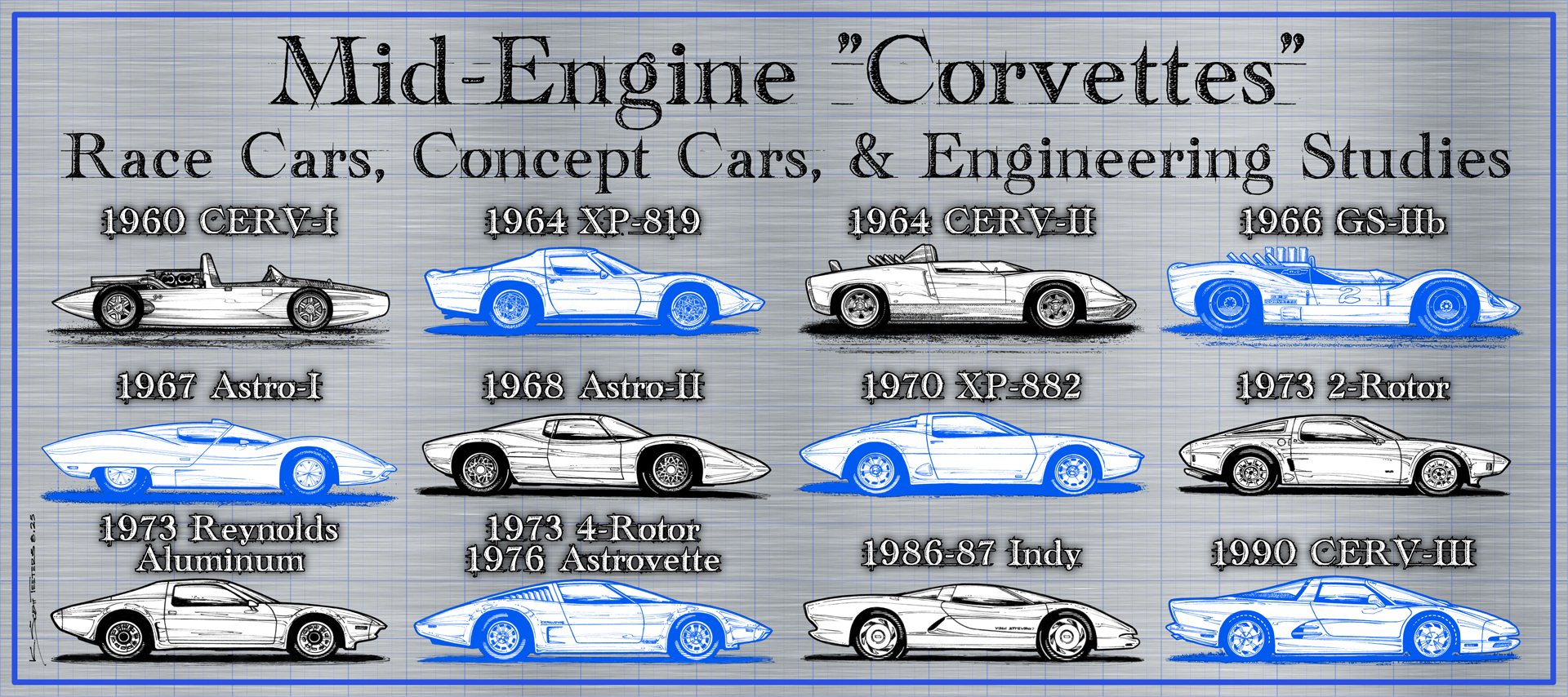
Twelve Mid-Engine Corvette Concepts (1960–1990)
A Brief Overview of the twelve mid-engine Corvettes from the 1960 CERV-I to the 1990 CERV-III.
1960 CERV-I
The CERV-I was built to the dimensions of 1960 Indy car specs, and was used through the 1960s to test engines, brakes, suspension setups, and tires. By the late 1960s, the CERV-I was fitted with a 427 ZL-1 engine and Car-Am-size tires. With tall numerical gearing, Chevy claimed 0-60 mph in just 2.8 seconds… Join CorvSport for only $2.92/month to read more!
I get the privilege to write about Corvettes nearly every day–thanks for being with us today on this Corvette journey. Join the CorvSport movement!
- Engage with CorvSport’s 168,000 Facebook followers and be the first to see our daily content.
- Experience how obsessed we are and view our top 25 monthly features by visiting our digital magazine, CORVETTE OBSESSED.
- Visit CorvSport.com to check out our vast database of over 5,300 features–exclusive market analysis, how-to guides, profiles, model history, racing coverage, and other unique/fresh content.
- Enjoy an ad-free experience, get exclusive content, and support CorvSport for only $2.92/month!
- This is Douglas B. signing off–click here if you would like to view more of my features.


